Huckleberry Hound Lands on the Moon
What could be more fitting for Independence Day than this fine specimen of vintage Americana? This is a ca. 1960 View-Master reel featuring none other than our old friend and southern blue dog, Huckleberry Hound. It is a fine example of the intersection of pop culture, art, science (optics), and space exploration, and is firmly rooted in the worlds of television and toys.
In this single disk episode, containing seven stereo image pairs, Huck decides to embark (see what I did there?) on an explosive adventure. His intended destination: the Moon!
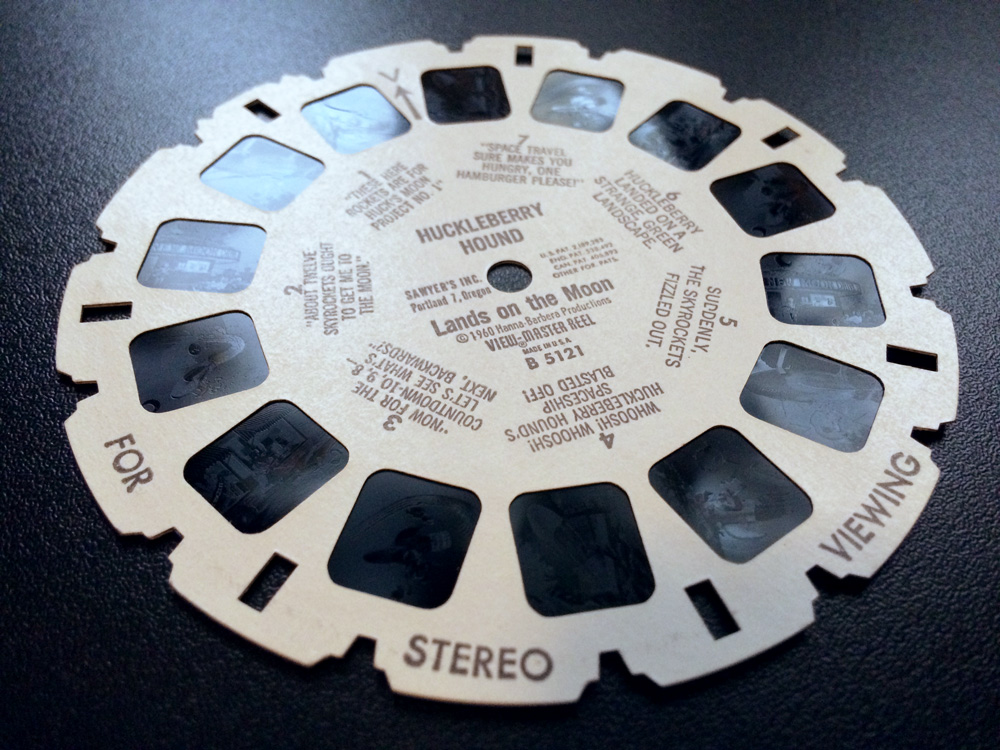
Photo: Dave Ginsberg
The success of Huck’s plan rests upon the power of twelve sky rockets purchased from a local shop. He securely straps them onto the back of a home-made open cockpit (!) winged spaceship. With its streamlined construction and its carefully cut red and glittery silver paint job, his spaceship resembles the type you might find on a mechanical kiddie ride in front of the local grocery store. Like I said, this was in 1960.

Excitement ensues when the fireworks are lit and the rocket containing its bubble-helmeted pilot launches into the night sky. A clock tower is struck during the ascent through the atmosphere, and then Huck barely misses a pair of ducks just as his source of propulsive power poops out.
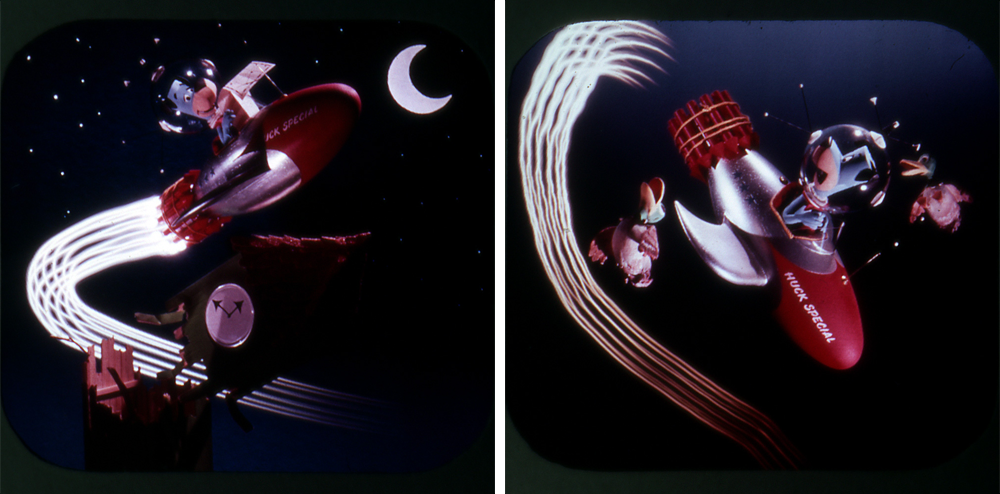
The sudden loss of lift causes a crash landing on a green and cratered apparently alien landscape. The final scene reveals that this was no alien planet at all, but a space-age 50’s drive-in with a domed roof made to look like the Moon.
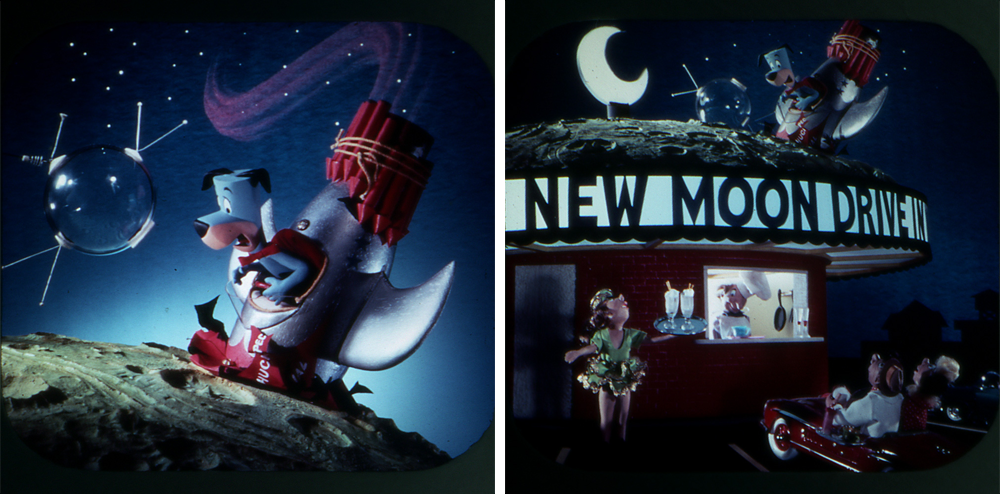
This View-Master reel is the very same one I had when I was a kid growing up in the early days of manned space exploration. It is still in my collection.
The images and the story of that adventure with its corny visual punchline have stuck with me from that time on. They were impressed upon the part of my brain that permanently records the things that we find wondrous as a child. They left a firm imprint on my developing psyche and served to help define who I would become as a person, an artist, an engineer, and a Space Geek.
When I first started to apply my 3D computer modeling skills to creating space imagery, the scenes I made had a direct lineage back to View-Master reels like this one.
Compare my version of Planets to the fourth scene from the Huckleberry Hound reel. Even though I had not looked at the View-Master reel in decades, the connection is plainly visible.
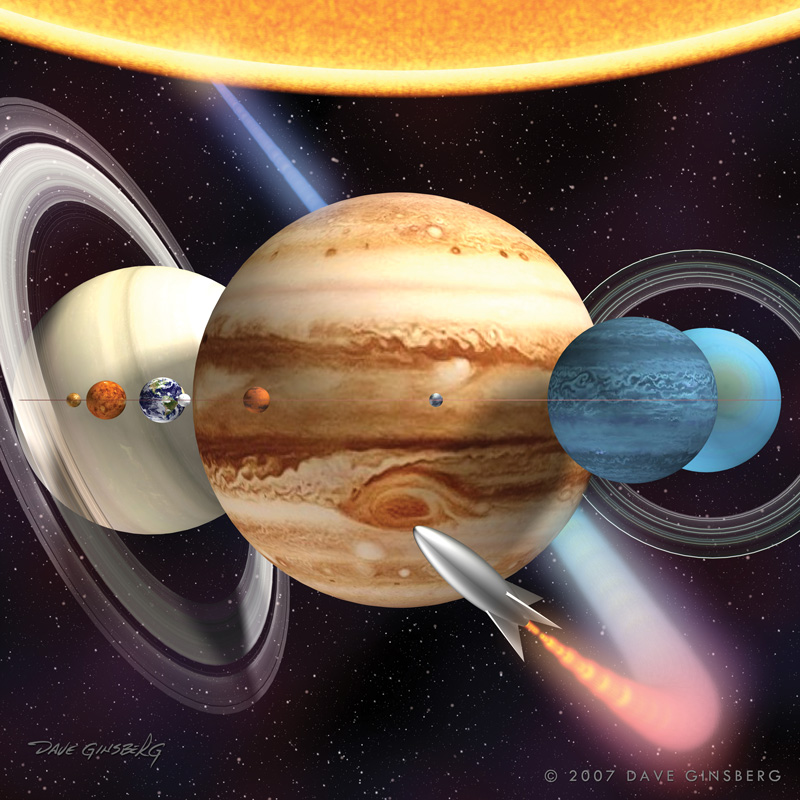
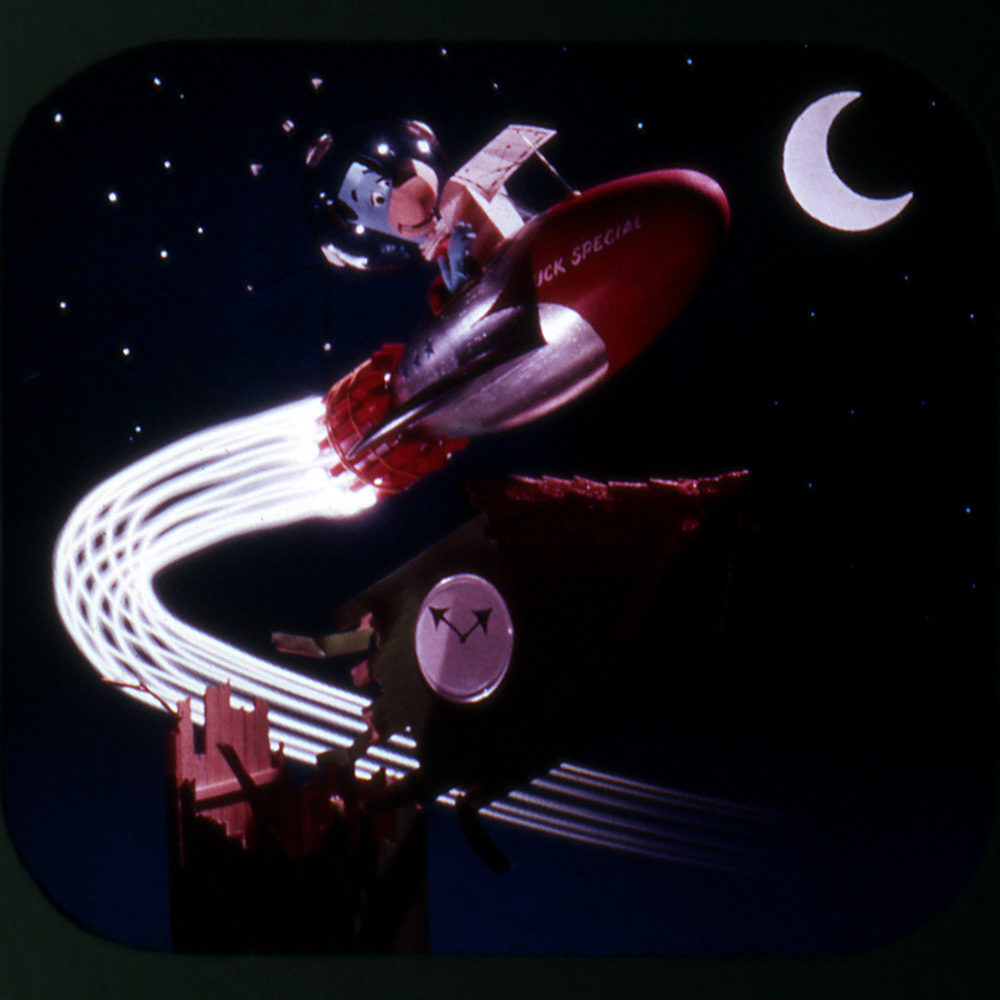
What continues to impress me most about View-Master reels of this type is that everything you see in the frames is a real, physical object. It amazes me the amount of work that must have gone into their creation.
Someone expertly crafted the each one of the figures, models and every object that appears in the scenes. Everything was built by hand. No computer generated imagery, no Photoshop. Just models, fishing line, and perhaps a little bit of hand photo manipulation and clever double exposures. The artists peeled the two-dimensional cartoon characters off of their flat animation cells and transformed them into the three-dimensional physical world.

In creating my artwork, I make my own 3D scenes and I have recently begun creating stereographic image pairs that work just like those on the View-Master reels. In contrast to the View-Master reels, nothing in my scenes is real. Everything is modeled with a mesh of vertices, line segments, and faces. Color and texture are added with procedurally generated materials and bitmaps. Scenes are illuminated with imaginary lights and the resulting renderings are mere illusions of computational technology.
Even so, when I look into the stereo images I have created, I get the same magical feeling that I experienced as a child. That sensation of being drawn into a three-dimensional world and being taken along on a space adventure with a blue dog rocketing into the starry night.
NOTE TO READERS
Creating Space has experienced a platform realignment. I’ve moved this blog over to Substack.
Please join me over at the new Creating Space blog and sign up for the free NERDSletter.
Read the new Creating Space here: daveginsberg.substack.com

(NOTE: This WordPress blog will continue to be available until I have moved the previous posts over to the new platform.)
All images and text copyright © Dave Ginsberg, unless otherwise noted. All rights reserved.